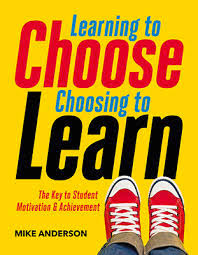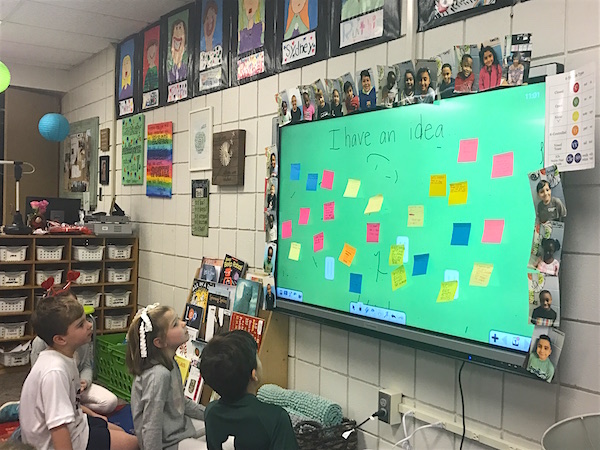More than 25 years ago, school leadership expert and education thought leader Michael Fullan mused: “Imagine if we treated students as people whose opinion mattered.”
As a school system, we began to wonder about that also. This set us on a journey to assess our district’s capacity to allow students a voice in their education.
The purpose statement of Mountain Brook Schools is “to provide an effective, challenging, and engaging education for every one of our students.” When we revisited this purpose statement three years ago, we were focused on two things: 1. We don’t want to change this as our mission, and 2. How can we continue and even improve upon ensuring it happens?
How should students function?
Where and how do you even begin to answer such a broad question? We began with the people to whom it matters most, our stakeholders. We assembled a group of teachers, parents, administrators, support staff, community members, and students to begin what would become our strategic dialogue.
The only goal of our first meeting was conversation centered on the question, How should students function in the district? A review of the responses uncovered a discrepancy between how students viewed their role in their education and how the adult stakeholders viewed their (the students’) role in learning.
The adults in the room thought students had a great deal of ownership in their learning. The students, however, felt they were viewed as more of a token: Students were involved because they had to be. This revelation caused the adults to ask the students many questions about how involved students should be and how that might look in schools.
The idea of student voice
Everyone in the room knew this was a big issue that had to be addressed.
This realization led us to Fullan’s quote above. Our strategic dialogue led us to the idea of student voice. And the deep conversations continued.
Over a period of several months strategic dialogue meetings were held to help us determine goals for our district over the next few years. As issues bubbled up, committee members turned to the students to get their thoughts, opinions, and ideas. As a result student voice became one of our four district goals to focus on in the coming years. It did not take long for us to see student voice is actually our number one goal.
In February 2017 a team from our district, attended the Learning Forward conference in Vancouver, BC and began networking with colleagues from Canadian and Texas school systems who had already begun exploring this topic.
Canada seemed much further along as we met people who served their districts as Student Voice Coordinators, Supervisors, Liaisons, etc. We met educators from Grapevine, Texas who had been surveying students and having teachers use this student input to guide instructional methods. My colleagues and I began discussing how we could take back what we learned at that conference and share it with all teachers in our district.
Broadening our districtwide discussion
Using our new knowledge, we felt confident introducing the student voice concept to our teachers and staff. Our superintendent Richard Barlow assembled the entire staff of Mountain Brook schools in a system-wide professional development day to share the emerging student voice process.

Dr. Barlow’s explanation was good. His slides were informative. But it was when he invited a Mountain Brook student to come up to the stage and share her experience as part of the strategic dialogue team that the essence of “student voice” crystalized for our entire district family. “I was nervous about attending,” the student confided to the (500+) audience that day, “but soon I felt like the most important person in the room.” And she was.
Her comments on the process and the outcomes made a significant impact on our teachers and from that day onward, many were asking for more information about student voice.
Going deeper through professional learning
Fast forward a few months to the 2017 Mountain Brook Learning Conference. District leaders led discussions on student voice prompted by our keynote speaker, teaching consultant and ASCD author Mike Anderson.
 In his address, The Power and Potential of Choice, Anderson helped teachers across all grade levels and content areas consider how to use student choice effectively as a tool for differentiated learning, positive engagement, and powerful learning. He shared a step-by-step process and practical strategies for teachers to help students who are bored, frustrated, or underperforming come alive to learning through the fundamental power of choice.
In his address, The Power and Potential of Choice, Anderson helped teachers across all grade levels and content areas consider how to use student choice effectively as a tool for differentiated learning, positive engagement, and powerful learning. He shared a step-by-step process and practical strategies for teachers to help students who are bored, frustrated, or underperforming come alive to learning through the fundamental power of choice.
District leaders hosted sessions about student voice throughout the conference and later at Edcamp Mountain Brook. In addition, teachers were given tools to take back to their classrooms. One in particular was the Question Formulation Technique (QFT), a practice developed by the Right Question Institute.
Moving the conversation into classrooms
The professional learning day presentation in February and the Learning Conference in June laid the foundation for what was to come next – school visits and face-to-face conversations with every teacher in every classroom.
What could have been a daunting task was actually an enlightening and rewarding experience. During these conversations, I, along with our staff development specialist Holly Martin, answered a wide range of questions about student voice – from the broad concept to everyday implementation in the classroom.
To give teachers a starting off point, we offered four ground rules:
- Ask students what they think.
- Listen to their responses.
- Respond in some way (even if it doesn’t result in what they requested).
- Share your learning/reflection.
In a variety of classroom settings and subject areas, teachers began asking and listening. Here are comments from a few of our teachers.
 M. Chatham – MBHS Math Teacher
M. Chatham – MBHS Math Teacher
For me, student voice has been less about taking surveys and finding out their thoughts on processes and procedures, and more about getting the kids to use their voices in the classroom to teach each other and support each other’s learning.
For example: I was discussing with one of my classes what we could do differently, because the current “state of the class” was not producing good results. One of the students spoke up and said that he worked best with involved discussion/analysis of the work. But then he looked around the room and pointed to another student, asking her, “But wait, that makes you crazy, doesn’t it? What can we do that keeps me interested but won’t overwhelm you?” I stepped back and watched the class define better norms for themselves. It was truly incredible.

A.C. Finch – MBJH English teacher
Our eighth grade class just wrapped up a reader’s choice book and assessment. The vast majority loved getting to read the book of their choice and choosing any assessment type to meet a standard. Some students went above and beyond, most had solid projects, some just met the basic criteria, and a few fell below my expectations.
The overall enthusiasm for the unit [see survey above] among my students is what will compel me to do it again. I can tell that this is going to be one of their favorite units of the year.
As teachers, we have to be open and vulnerable. We may have to make changes, we may see things that we wouldn’t normally see because there are 17 other little brains helping us to see everything!
When you create the right community within your classroom, students feel open to share because they know they are in a safe environment. The classroom culture is essential to allowing student voice.
Student voice is a “culture of ownership”
As you can see, our year of exploration on student voice has led to many great experiences for students and teachers alike. In our journey forward, we want to be intentional and purposeful about listening to students and overtly responding to them in some way.
We have learned that student voice is not a thing. It is a culture of true student ownership of learning. It is a partnering of teacher and student. It is pulling back the curtain and allowing students to see why we do the things we do and asking them (when appropriate) if it could be done better for them to learn more.
While many teachers approached our exploration of student voice with trepidation and fear of losing control, they are discovering that student voice and teacher voice are not in tension with one another, but rather the student voice is another layer for decision making by the teacher that helps us engage more students in the learning.
Dr. Missy Brooks is the Director of Curriculum and Instruction for Mountain Brook Schools. She also serves as the Director of Federal Programs, Career Tech, Professional Development, Accountability, Response to Instruction (RTI), and Gifted Education. She is currently involved with the implementation of the Institute for Innovation where Mountain Brook teachers are encouraged to try new-to-the world ideas.
Missy worked as an English and science teacher and as a local school leader in a large district prior to coming to Mountain Brook. She has served as an adjunct professor at Samford University and is a consultant for various school systems across the state in the area of curriculum and assessment.



0 Comments on "Empowering Students to Share Their Voices – Then Listening to Enhance Their Learning"